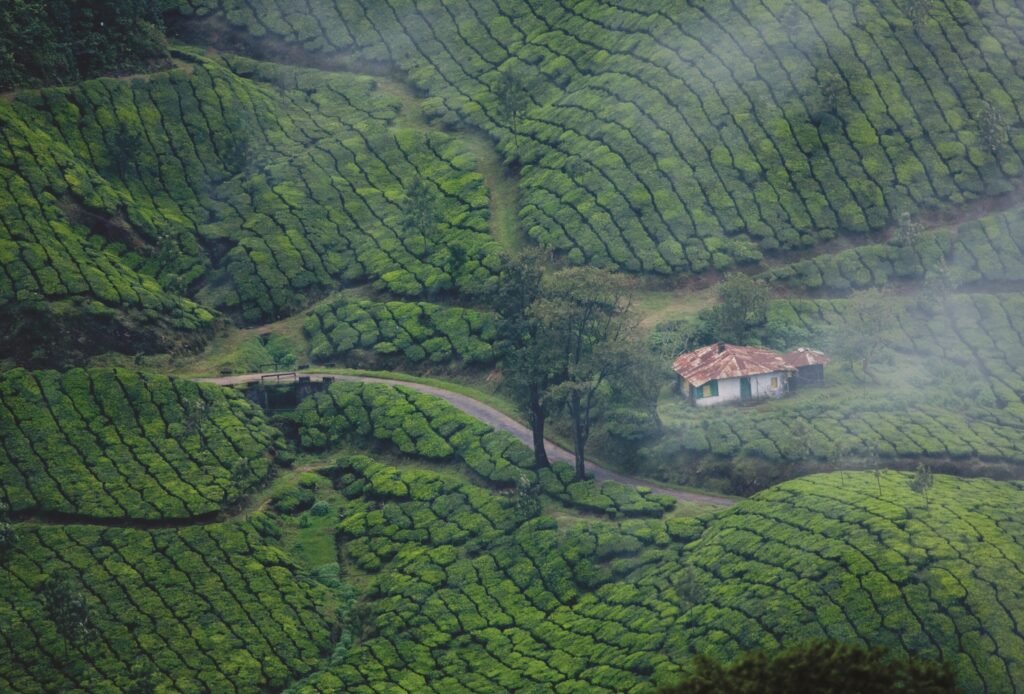Trending Travel Destinations You Should Book Now
Explore the Valley of Flowers in Uttarakhand — a UNESCO World Heritage site perfect for nature, trekking, and adventure lovers. Plan your floral escape today!
Valley of Flowers: A Breathtaking Himalayan Paradise for Nature Lovers
Imagine entering a realm in which every step on the trail seems like strolling over a watercolour masterpiece, the air smells of wildflowers, and the heavens flirt with snow-kissed summits. The hidden gem in the Garhwal Himalayas of Uttarakhand, India—the Valley of Flowers.
The First View: An Actual Painting
Tucked within the Nanda Devi Biosphere Reserve, the Valley of Flowers National Park seems like a dream come true place. This valley is a riot of colour between July and early September, bursting with about 500 varieties of alpine flowers. That this area has been named a UNESCO World Heritage Site.
It’s the perfect place for photographers, environmentalists, and people looking for quiet mountain getaways.
Why Does the Valley of Flowers specialise?
This is not only one more hill station. Every blossom, bug, and stream in this delicate ecosystem contributes something. Botany buffs and environmentally aware visitors will find heaven in the valley thanks to its varied flora, which includes blue poppies, cobra lilies, daisies, and anemones.
The way the Valley of Flowers changes every few weeks makes it incredibly remarkable. As various flowers blossom and fade, the colours change to produce a live kaleidoscope of the finest works created by nature.
Making Travel Plans: When and Where to Go
Mid-July to late August is the ideal time to visit the Valley of Flowers, since the rain helps the valley bloom fully. Starting in Govindghat, you walk up to Ghangaria, the base camp for both the Valley of Flowers and Hemkund Sahib, a holy Sikh pilgrimage site that you can enjoy.
Beginning with a fair level of fitness, this 16-kilometre walk is just moderately difficult. There are porters and horses, but walking lets you thoroughly enjoy the always-shifting surroundings.
What should one pack for the adventure?
- Warm clothes (temperatures drastically drop).
- Waterproof clothing (you probably will run over rain).
- Excellent grip-based hiking shoes
- Power bank and basics (no valley network)
- Reusable water bottles and dry munchies
Strict conservation rules cover the valley; no camping, trash, or flower picking is permitted, therefore maintaining its unspoiling beauty.
Ecological Travel and the Fragile Valley
The solitude and preservation of the Valley of Flowers help it thrive & make the places more beautiful. Travel sustainably here is not optional; it is rather necessary. Steer clear of plastic, follow approved paths, and travel in small groups to minimise the effect.
By hiring local guides, staying in guesthouses managed by communities, and supporting nearby towns such as Pulna and Ghangaria, you ensure that your money directly benefits the area.
Experience Above Trekking
While the Valley of Flowers offers a stunning visual experience to everyone, the overall adventure goes beyond just the flowers:
- Bird Watching: View Snow Pigeons and Himalayan Monals in the valley.
- Butterfly Photography: There have been documented over a hundred different butterfly species.
- Medicinal Plants: Discover age-old herbs from a local guide
- Cultural Exposure: Along the journey, stop at little mountain communities.
Perfect for All Kinds of Travellers
The Valley of Flowers has something for everyone, whether your preferred travel is solitary, family, or romantic honeymoon. Its serene landscape is perfect for self-discovery, connecting with the natural world, or just getting away from the commotion of modern society.
Many tourists mix this journey with Hemkund Sahib or even a longer schedule including Auli, Joshimath, and Badrinath.
Advice from the Trail: Make It Remarkable
- Starting your journey early in the day will help you to enjoy unhindered vistas.
- Take no hurry. Break off to see the hidden treasures of the valley.
- Either download an offline flora identification software or carry a little floral field guide.
- Respect the environment: absolutely no flower plucking, no drone flying, and no loud music.
Where to Stay: A Cosy Stop Before Paradise
Ghangaria features various reasonably priced lodges and eco-camps even though you cannot stay inside the valley. After a day of hiking, the basic but adequate hotel provides warm beds and tasty meals.
The Paradise of a Photographer
Among India’s most Instagrammable natural beauties, if you enjoy travel photography, is this one. Here, however, images are memories caught in time rather than only vanity. Every view, from sunrise across the valley to misty meadows and close-ups of petals loaded with dew, is a frame-worthy masterwork.
Travel Rules and Safety
- Although the peak of the floral bloom occurs in July & August, the valley remains open for visitors from June through October month.
- Foreigners are required to obtain specific permission before visiting the park.
- There is no mobile signal beyond Govindghat, so let loved ones know ahead of time.
- Have permits and carry ID proof.
- Check the continuously updated weather forecast.
Valley of Flowers in Indian Legendography
Legend has it that during the Ramayana of treta yug, Hanuman discovered Sanjeevani Booti in the Valley of Flowers. Locals say the valley has spiritual energy; hence, a walk here is more than just a walk; it’s a healing process.
Finally, see the Valley of Flowers with TrendsToTravel.
The Valley of Flowers is an emotion, a memory just waiting to be created, not only a place. Whether your trip is a once-in-a-lifetime family adventure, solo travel, or a budget vacation, this Himalayan treasure guarantees memories you will carry with you always.
At TrendsToTravel, we think of travels that awaken the soul. Our carefully chosen travel guides, financial advice, and local tales enable you to explore deeper and smarter. Your next trip should be a narrative worth sharing, not only a holiday.
So get ready, tie your boots, and travel to one of India’s most magical natural beauties. The Valley of Flowers is waiting, untamed, lovely, and unforgettable.



